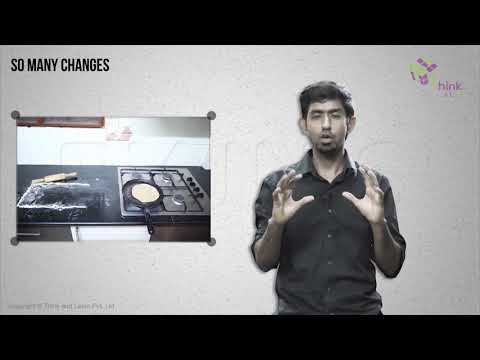Table of Contents
What is Change?
Some changes are slow while some are fast, some are natural and some are man-made. You will find that many changes are taking place around us for e.g. growing of plants in your balcony, sometimes there is a change in colour and sometimes you will find drying of leaves.

Reversible Changes
Any changes which can be reversed or are a temporary conversion are known as reversible changes. The reactions which are reversible are called reversible reactions. In this reaction, one substance is modified into another form but a new compound is not formed. Processes such as melting, boiling, evaporation, freezing, condensation, dissolution are reversible changes. A few examples are melting of wax, freezing of ice, and boiling water which evaporates as steam and condenses back to water.
Reactions are an interaction of two or more compounds called reactants to produce a product(s). In a reversible reaction, reactants and products formed are connected by a two-way arrow (⇌). This means reactants can be obtained back from the products.
Consider the reaction below,
A +B ⇌ C + D
Here, A and B are two reactants which react to give C and D. The two-headed arrow indicates that the reaction is reversible and the reactants, A and B can be obtained from C and D.
Irreversible changes
In contrast to reversible changes, irreversible changes are permanent changes. Reactants react to form an entirely new compound and cannot be reversed. Heating, burning, mixing, and powdering are a few processes which cause irreversible changes. A common observable example is the cooking of raw eggs which can’t be converted back to its original form. Ash obtained by the combustion of paper or any other substances is another example.
When a reaction is taking place in a unidirectional way such reactions are called irreversible reactions. In such reactions in a period of time reactants react completely to form a product. Here reaction is denoted by a one-way arrow (→).
For example,
A → B +C
Here, A is the reactant which is completely converted into products B and C which do not react to form A.

For more details, register with BYJU’S & download our app.


Thanks !! that’s the perfect explaination for my class !!